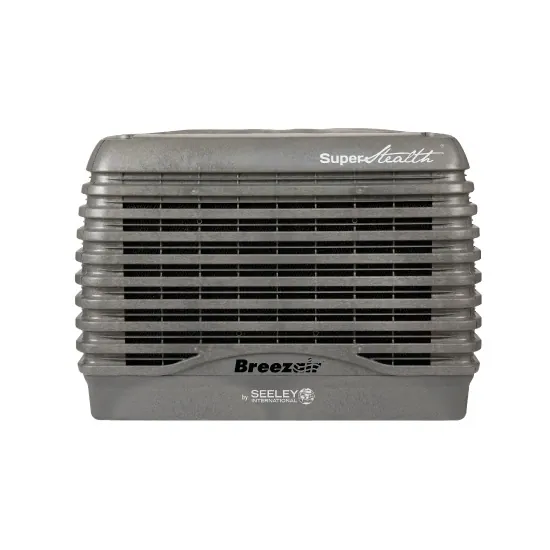Evap Air Cooler
How TBS-580 Evaporative air-cooling works
Evaporative cooling is a process that has been used throughout history – thousands of years ago. The Arabs hung wet blankets in the entrances to their tents for a cooling effect. The Greeks also practiced a similar method by placing terracotta pots filled with water in their doorways.
Evap air cooler takes advantage of this natural process. Each Breezair cooler contains large cooling pads, which are soaked with water. Hot ambient (outside) air passed through the cooler with a quiet but powerful fan.
When hot air passes through the wet pads, the water absorbs the heat from the hot air as it passes through the wet pads, the water absorbs some of the heat as it evaporates. The cooled and fresh air is distributed into the building.
Industrial Ducting coolers follow evaporative cooling technique to cool down the air by passing it through water-soaked pads. The cooled air is then sent through a network of ducts which ensures that all parts of a building are evenly cooled.
The efficient operation of Breezair evaporative coolers indicates that enormous quantities of water are not necessary to get the best cooling results.
The energy saving achieved by an evaporative cooler is 50 % to 75 % less than an average air conditioner. These significant energy savings are due to the absence of a compressor and refrigerant function.
The natural evaporation method cools the air, while the pads filter out dust, pollen, and other contaminants. This natural method makes the air cooler, cleaner, and, fresher without using any toxic chemicals.

- Hot outside air is pumped through water-soaked pads.
- As the air blows through the pads water is evaporated and the heat in the air is absorbed.
- This lowers the humidity of the air, which is then pushed to the whole building causing a cooling effect.

FOR COMMERCIAL & AND INDUSTRIAL SPACES
Breezair Industrial Evap Cooler is recognized as a standard for cooling large areas. This Industrial Ducting Cooler can replace traditional A/C system which runs on high capital.
SAVING ON RUNNING COSTS
A Breezair system uses up to 87% less energy than regular air conditioning systems. The only consuming components of an evaporative cooler are the fan and a water pump.
100% FRESH, NOT RECIRCULATING AIR
Traditional A/C systems rely on recirculating the air inside the building which results in an impure and contaminated air supply in large industries. Evaporative cooling always uses fresh air from outside.
EASY TO MAINTAIN AND INSTALL
Breezair’s Industrial Ducting Coolers are energy-efficient and environmentally sustainable because they don’t require compressors or chemical refrigerants to function. The straightforward design of Breezair evaporative coolers guarantees easy maintenance and speedy installation, making them a dependable and practical cooling option.
GREEN TECHNOLOGY
Evaporative cooling systems contain no harmful synthetic refrigerants like other cooling refrigerated systems which use potent greenhouse gases like hydrofluorocarbons or chlorofluorocarbons, which deplete the ozone layer.
ONLY WATER USED
Evaporative coolers run on water and electricity. The WATERManager TM system senses water quality with a probe that sends a signal back to the electronic module, which then ejects some dirty water and allows fresh water to enter

